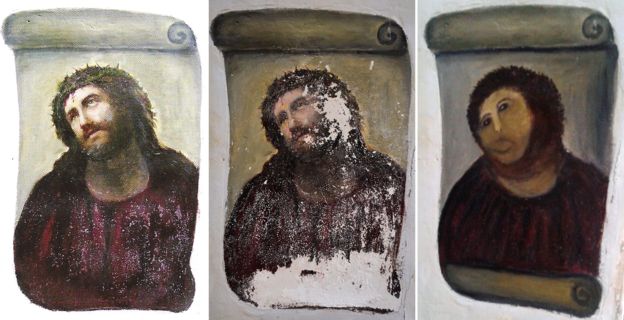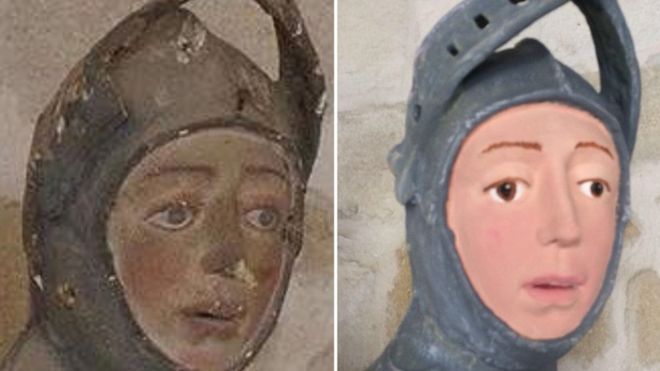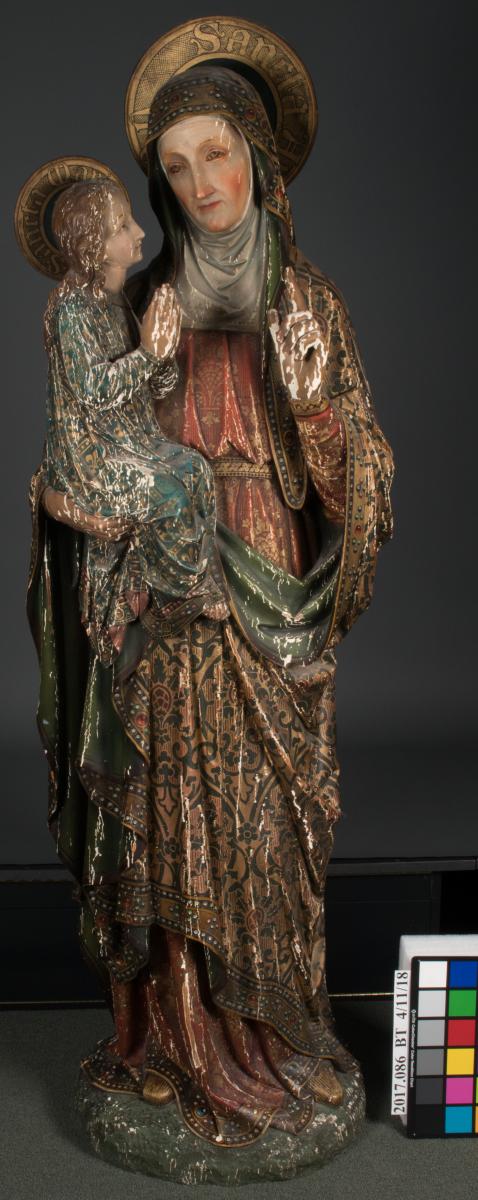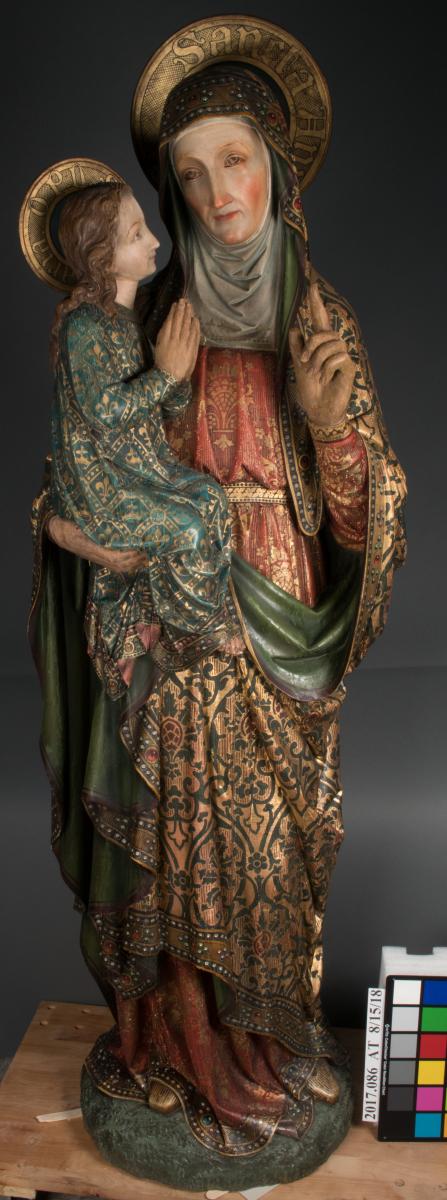Much has been made over the last several years over “restoration” work performed by untrained people. First there was the fiasco of the fresco “Ecce Homo” in the Sanctuary of Mercy church in Borja, Spain, which was restored by an elderly parishioner. More recently, in June of 2018, there was the story of a group in Estella, Spain, that painted over a wooden statue of St George which dated back to the 16th Century. You can read more about these pieces here.

Three images showing the original (left), deteriorated (middle), and “restored” (right) verison of the Ecce Homo fresco. -Photo Credit: AFP / Centre De Estudios Borjano
Differences of aesthetic opinion aside, the real problem with work like this being done by non-professionals, is that it doesn’t preserve the original work. Vital historical information can be lost through carelessness. In the case of the statue of St George, the new plaster and paint covered the original materials. Part of a conservator’s Code of Ethics is to maintain “retreatability” as much as possible. If a conservator tried to remove the overpaint on this sculpture, it would damage or permanently remove the original materials below. The information of how the sculpture was made is contained within the layers and may be lost forever.

The St George Sculpture before and after the “restoration” attempt. -Photo Credit: Artus Restauració n Patrimonio
Here at the Ford Center, we treated a sculpture of St Anne holding the young Virgin Mary from a church here in Omaha. Although this sculpture is likely from the 20th Century, it was made in a similar fashion to the sculpture of St George.
Detail of St Anne sculpture before treatment.
A single piece of wood was carved in the shape of the figures and then the surface was coated with a thick layer of gesso. The gesso on the garments was given a texture of fine, raised lines, which appear to be the result of having a tool run over it before it dried. The surface of the gesso was covered in what appears to be gold leaf and gold-toned paint. This golden surface was painted over with a matte paint to create the effect of an intricate brocade. The faces of St. Anne and Mary appear to have been painted using different materials and techniques than the rest of the sculpture. St Anne’s eyes appear glossy, possibly from the presence of an applied resin. The sculpture had been retouched over the years. This was most evident in the area of the hands, where another, lighter, flesh color is visible around the edges of some loss areas.
The main issue with the sculpture is that its surface was unstable and original material was falling off before our eyes. The faces and bodies of St Anne and Mary were disfigured from the extensive loss of paint and gilded gesso. Distracting white bare patches and streaks where only gessoed wood substrate remained covered the surface. These losses were mainly caused by the differential expansion and contraction of the wood, gesso, gilding, and paint to changes in relative humidity and temperature over time.
Detail of cleaning test on the Mary figure.
The first step of treatment, after thoroughly documenting the sculpture, was to carry out more testing to determine what methods and materials could be safely used to clean and consolidate the object.
Once this was established, treatment was underway. Before even vacuuming it was necessary to apply a conservation-grade consolidant to all accessible areas where paint and gilding was flaking off or where it would likely flake off in the future. We applied a low viscosity aqueous consolidant to these areas using a thin-tipped brush. Because of its low viscosity, the solution wicked under the even the finest cracks, drawn in by capillary action. This step took many hours, but is essential for the future preservation of the sculpture.
Conservation Technician Vonnda Shaw (left) and Objects Conservator Rebecca Cashman (right) inpaint losses on the sculpture.
Once loose and lifting surfaces had been consolidated, the next step was to remove the layer of particulate matter covering the surface. This was carried out by gently brushing the surface using a soft bristle brush in combination with a HEPA vacuum. Besides marring its appearance, dust attracts moisture and pests to surfaces, so it is very important to remove it.
Surface soiling was removed to the extent possible, using solutions chosen through careful testing. Different areas of the sculpture required different cleaning techniques and tools, ranging from thin-tipped swabs to solvent poultices. There were particular areas of the sculpture that had acquired a dark “patina” over time from repeated touching, such as Mary’s feet. Since this is part of the object’s history of use, these areas were minimally cleaned. Beads of wax from candles were left on the base of the sculpture for the same reason.
An appropriate adhesive was injected into deep cracks in the wood. These areas were then filled with tinted wax, which was chosen as a fill material because it would allow the wood to expand and contract without resistance.
Detail of St Anne sculpture after treatment.
An acrylic resin barrier layer was applied to the numerous loss areas covering the surface. Once dry, these areas were toned with a compatible acrylic resin mixed with dry pigments. As with many conservation treatments, the goal was not to make the sculpture look new, but to make the areas of damage fade into the background so that the original appearance of the sculpture might be grasped. Upon close inspection, one can differentiate the recent inpainting from the surrounding surface.
Now that the sculpture is back at the church, it should be displayed in stable environmental conditions, away from heating and cooling vents and in low light levels. Future flaking of the multi-layered surface can never be fully prevented, but keeping the sculpture in a stable environment will dramatically slow down this process.


Before (left) and After (right) treatment photos of St Anne Sculpture.
In the Roman Catholic Church, St Anne is traditionally believed to be the mother of Mary, the Mother of Jesus. Her feast day is celebrated on July 26, and the Feast of the Immaculate Conception (the conception of Mary) is celebrated December 8.



